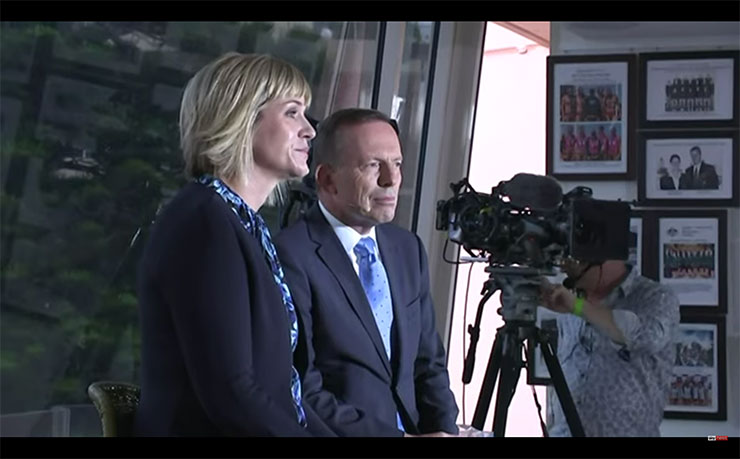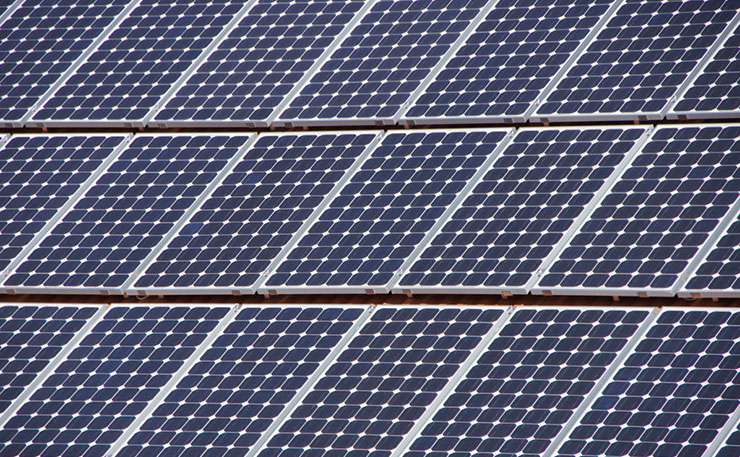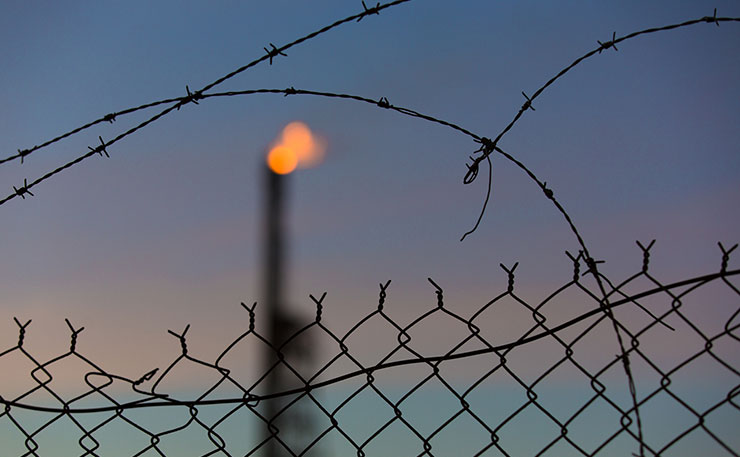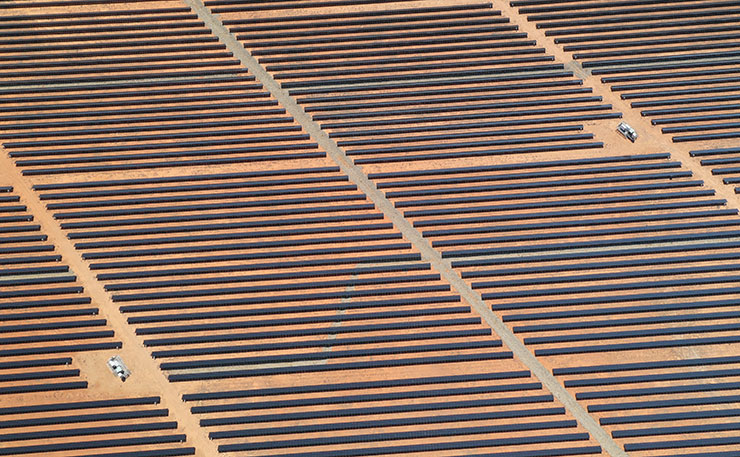DON’T MISS ANYTHING! ONE CLICK TO GET NEW MATILDA DELIVERED DIRECT TO YOUR INBOX, FREE!
When a scientific debate becomes political, facts are often the first thing to suffer. Our future and safety is not far behind, writes Geoff Russell.
The “Report of the inquiry into the prerequisites for nuclear energy in Australia” has just been published. Inquiries are supposed to be just that… inquiries. People need to visit them with an open mind, leave their predispositions at the door and learn something.
But what did we get from our elected members?
The Liberals and Nationals lined up on one side and the ALP lined up on the other. Which left Independent Zali Steggall as the most interesting player in the game. Except that it isn’t a game, it’s really deadly bloody serious.
The inquiry heard from plenty of witnesses and took over 300 submissions. The ALP members wrote a dissenting report, citing all the old arguments from their favourite anti-nuclear gladiators. The Liberals/Nationals outnumbered them 2 to 1, so they got to write what is called the Main report and Steggall decided to sit mostly on the fence, but with her legs clearly dangling on the ALP side.
Why it matters?
But first, why does this enquiry even matter? Is this enquiry just about decarbonising Australia’s energy supply? Not at all.
If you think globally, then without nuclear power we are all toast. The International Energy Agency (IEA) warned in a report earlier this year that any further nuclear closures in the advanced economies of Japan the EU and the US will put global decarbonisation targets at risk.
They point out that wind and solar capacity grew by 580 GW in advanced economies over the past 20 years. But if the decline in nuclear power continues, the next 20 years would require five times the rollout of the past 20 years… just to offset the decline. So it matters that the anti-nuclear mindset in places like Japan, Germany and the US is reversed.
Put simply, the anti-nuclear movement is more of a risk to rolling back climate change than either Morrison or Trump.
Australia lifting her bans on nuclear power with a bipartisan agreement would send a powerful message to other countries. But our politicians can rarely see past domestic point scoring and old ideologies.
And one more reason
And of course, there’s another reason that Australia should be sending a global message about nuclear power. Consider this map showing the recently completed Taishan power plant in China and the area you’d need to clear and cover with solar panels to get the same amount of energy annually.

But let’s get back to Steggall. She may yet become the key.
Spotting bad arguments
Steggall is a lawyer, which means she should be able to differentiate between good and bad arguments. But it might also mean she’s skilled in wielding words to win a debate regardless of the truth; the deft sound bite or artful slogan that rings in your ears. Let’s examine just one of her arguments: safety.
Steggall took issue with the main report statement that nuclear energy is one of the safest forms of energy in the world based on comparative mortality rates. The report had a table (Table 1.4) giving deaths per peta-watt-hour. A peta-watt-hour is a really large amount of energy; but it doesn’t matter, what matters is the relative size of the numbers in each row.
| MORTALITY RATES BY ENERGY SOURCE | |
| Electricity production technology | Deaths |
| Coal – China | 90,000 |
| Coal – USA | 15,000 |
| Oil | 36,000 |
| Biofuel | 12,000 |
| Gas | 4,000 |
| Hydro | 100 |
| Hydro – including disasters | 1,400 |
| Solar– Rooftop | 440 |
| Wind | 150 |
| Nuclear – Including Fukushima and Chernobyl | 90 |
Table 1.4 Mortality rate per peta-watt-hour (K.Emanuel MIT)
Steggall claims that the source of the table could not be verified and as such cannot be considered as credible evidence. What? The source is listed in the report as K. Emanuel MIT… he’s a Professor at the Massachusetts Institute of Technology.
Why didn’t Steggall just call him? Or ask parliamentary staff to call him? Or email? Emanuel is pretty easy to find. I emailed him and he responded within 5 hours.
She then asserts that that table understates the very real danger of nuclear energy. At this point you’d be expecting an alternative table with different numbers from a source she could verify. But Steggall doesn’t have an alternative table. So instead, she just made a quantitative claim and then produced no data to support it.

Steggall also claims the table misleads about down-stream health effects. How does she know that the table doesn’t include down-stream health effects? How does she know that deaths from radiation induced cancer aren’t included? She didn’t bother to find out anything about the table, but is still happy to make claims about what it does and doesn’t include.
As it happens, the nuclear row in the table is consistent with a figure including cancer deaths from Chernobyl – in other words, down-stream health affects. The figure probably came from another study (which I’ll get to shortly), but it’s consistent with the methodology described here.
There have been some 4,000 thyroid cancers since Chernobyl (in among the 20 million other cancers in Ukraine, Belarus and Russia) and including all 4,000 cancers as deaths gives about 37 deaths per peta-watt hour of the 90 in the row. So the nuclear row includes, as deaths, over 3,950 people who didn’t and won’t die from cancer, but nuclear still comes out as safer than anything else!
If you don’t understand exactly how a number is produced, then it doesn’t mean much. Better to understand one number deeply than to be able to rattle off a dozen you haven’t got a clue about. But even if emailing the source was too much trouble, why didn’t Steggall just ask Google?
A quick search will bring you to this Lancet paper from 2007 which gives quite a bit of data from a very large and detailed study of the health impacts of various energy sources. And lo-and-behold, it finds that nuclear isn’t just one of the safest energy sources, but the safest form of those studied. And they looked at all impacts … accidents, pollution, mining, cancer. The entire kitchen sink.
However, that study didn’t cover wind and solar; probably because at the time, they were too small to be considered important.
As it happens, the work underpinning the Lancet paper is the source of most of the rows in Table 1.4; as you’d expect. The units may have changed, but work like this is seriously expensive and not frequently replicated; more’s the pity.
But what about wind and solar? The row for solar in Table 1.4 is for rooftop solar and it’s an estimate based on methodology explained here. In short, roofing is a really dangerous job and if you know the rate of injury and deaths for roofers, then you can get a reasonable estimate of rooftop solar safety by calculating the time taken installing panels. You’d also have to add in the death and injuries of DIY householder crawling around roofs cleaning their panels.

It’s entirely unsurprising that rooftop solar is so dangerous… falling off ladders and roofs is a major source of hospitalisations and serious trauma. Ask yourself which you’d prefer, a dose of radiation that might shorten your life by 2 months, or falling off a ladder and living out your days in a wheelchair?
Why did I pick 2 months? Did I just think up a number? No. Two months was the median loss of life due to radiation of less than one Sievert received by atomic bomb survivors in Japan after World War II. It’s worth noting, one Sievert is a really large dose – nobody at Fukushima got anything even close to that. If a triple meltdown won’t do it, then nothing will.
So Steggall was either too lazy to Google or simply didn’t want her world view upset by the facts.
Nuclear power is amazingly safe. Even when it goes wrong its amazingly safe, compared to falling off a roof while cleaning your solar panels.
Health matters
Sticking to the health angle for a minute, Steggall then starts to discuss Fukushima and Chernobyl. What are her sources? The Electrical Trades Union and a policy officer at the Public Health Association. Remember, this is a woman who dismisses the credibility of evidence from an MIT Professor.
Did she quibble with the ETU/PHA claims and ask for original sources supporting their claims?
Steggall seems utterly convinced about the dangers of the meltdowns at Fukushima, but doesn’t cite any evidence of even a single death from these events (because none occurred, as distinct from the evacuation). The ETU claimed that when nuclear fails it fails “on a massive scale”. What’s the evidence for this?
Note to readers: The word “Chernobyl” isn’t evidence, it’s just a word.
Many people thought Chernobyl would spawn a tsunami of cancers, but it didn’t. The predictions have failed. Experts know this and understand very precisely why.
You can hear an actual expert on ABC’s Science Show recently. Radiation turns out to be a very weak carcinogen. It got its fearsome reputation by virtue of being ‘the first’… it was the first way people knew to smash DNA and produce mutations… in fruit flies. We now know that many other common place carcinogens are much worse in people; alcohol, tobacco, inactivity, obesity and red and processed meat.
Had the International Atomic Energy Agency guidelines been followed by Japan instead of bowing to populist fear mongering there would have been no evacuation and none of the deaths and suffering that resulted… from the evacuations, not the radiation, which has claimed zero lives so far.
Energy sources which really do fail on a massive scale
Unlike nuclear power, there are energy sources that fail regularly on a massive scale; meaning a scale that kills dozens of people, like Chernobyl. What are they?
The natural gas disaster at Ufa not long after Chernobyl killed nearly 600 and left 800 with serious burns. The Wikipedia list of pipeline accidents is daunting… 250 killed here, 500 there, 60 here; between 1994 and 2013 gas accidents in the US alone killed 641 people.

Clearly natural gas can fail on “a massive scale”. Why isn’t the ETU lobbying to ban gas? Why isn’t Steggall? Why are there no gas prohibition bills?
Dam disasters can and have been even worse – the Banqiao Reservoir Dam failure in China killed an estimated 171,000 people. So why doesn’t Steggall, the ETU and PHA oppose hydroelectricity? Why aren’t they pushing for dam prohibition bills in Australia?
Superficiality rules
The superficiality of this inquiry report is breathtaking; it isn’t just Steggall who is repeatedly sloppy. The entire 230-pages is an incredible catalogue of ‘he said this, but she said that and this was contradicted by so-and-so’; etc etc, ad infinitum. They’d have been better off just considering a couple of claims and actually doing some serious digging into them.
There are of course some claims which aren’t easily settled, but nuclear safety and waste management are trivially easy if you actually get your hands dirty and dig into the data.
Consider the complex issue of whether it is possible to decarbonise an electricity system without nuclear power. That’s worth some serious effort to understand and merely quoting a bunch of clearly partisan witnesses isn’t illuminating.
Steggall cites Ian Hore-Lacy – a former environmental scientist and adviser to the World Nuclear Association – as saying there is no realistic decarbonisation prospect for Australia without nuclear. She then quotes Professor Andrew Blakers who says that building a 50 to 100 percent renewable energy grid is “straightforward using off-the-shelf techniques”. This was backed by Dr Mark Diesendorf, so that was enough for Steggall, who dismissed the Main Report finding which sided with Hore-Lacy.
How do we settle conflicting opinions like that?
Real engineering is sometimes a little different from what’s done in Universities. Academic papers in journals tend to be short and full of simplifying assumption, but real-world engineering documents tend to be long and complex.
The Australian Energy Market Operator – AEMO – is the organisation responsible for planning and coordinating almost all of our electricity system. They don’t think a 100 percent renewable system is “straightforward”. They recently launched a project to consider the problems. Step one was to look internationally at what was considered possible.

It describes the challenges… including how the Germans had to physically retrofit inverter changes across the country in response to blackouts as a result of increasing penetration of renewables (Ed’s note: shortly after Fukushima, Germany began winding back its extensive nuclear power infrastructure, in favour of solar and wind). South Australia is at the forefront of regions with high levels of renewables and increasing numbers of security directions; these are directions by AEMO to keep synchronous generators on-line to avoid blackouts or load shedding (small blackouts).
Last year 153 of these were issued, covering 36 percent of the year. Does that sound like AEMO agrees with Blakers/Diesendorf that it’s ‘straightforward’?
All over the world, integrating increasing amounts of intermittent electricity is proving complex; even at very low levels. Nobody can claim it is impossible, but straightforward? If that were true, then AEMO wouldn’t need to be consulting with all the overseas groups they’ve been consulting with.
The International Energy Agency’s warning on the decline of nuclear in advanced economies should scare the living daylights out of any thinking person. It deserves a much better response from our politicians than partisan bickering.
DON’T MISS ANYTHING! ONE CLICK TO GET NEW MATILDA DELIVERED DIRECT TO YOUR INBOX, FREE!
Donate To New Matilda
New Matilda is a small, independent media outlet. We survive through reader contributions, and never losing a lawsuit. If you got something from this article, giving something back helps us to continue speaking truth to power. Every little bit counts.




